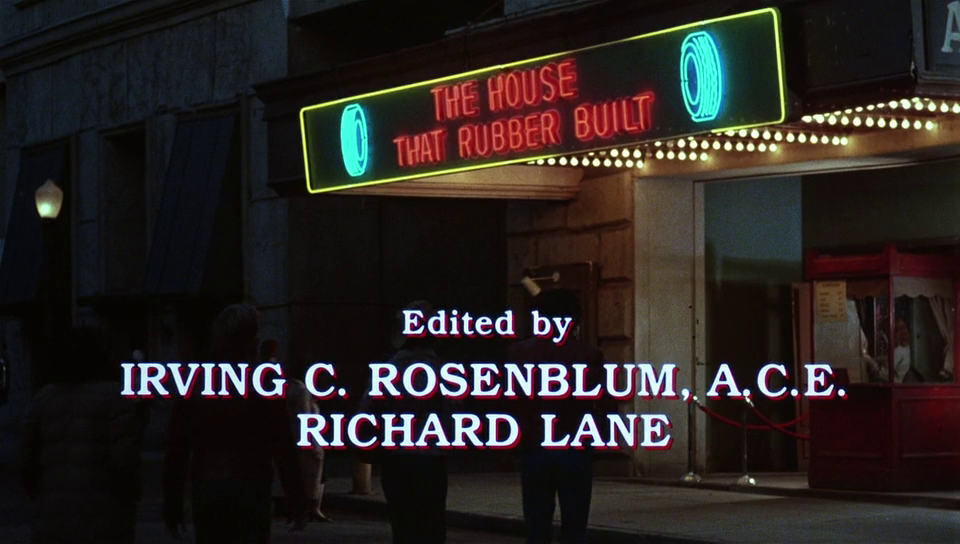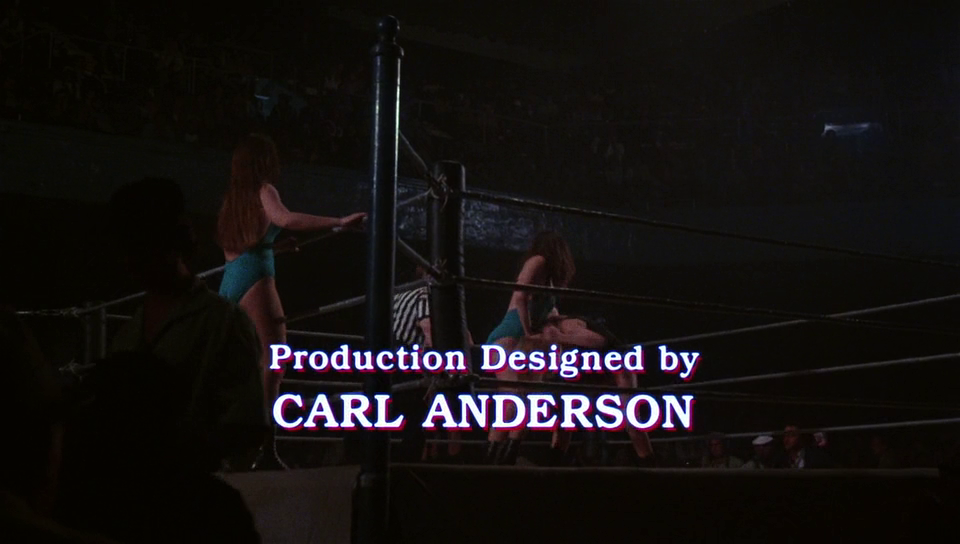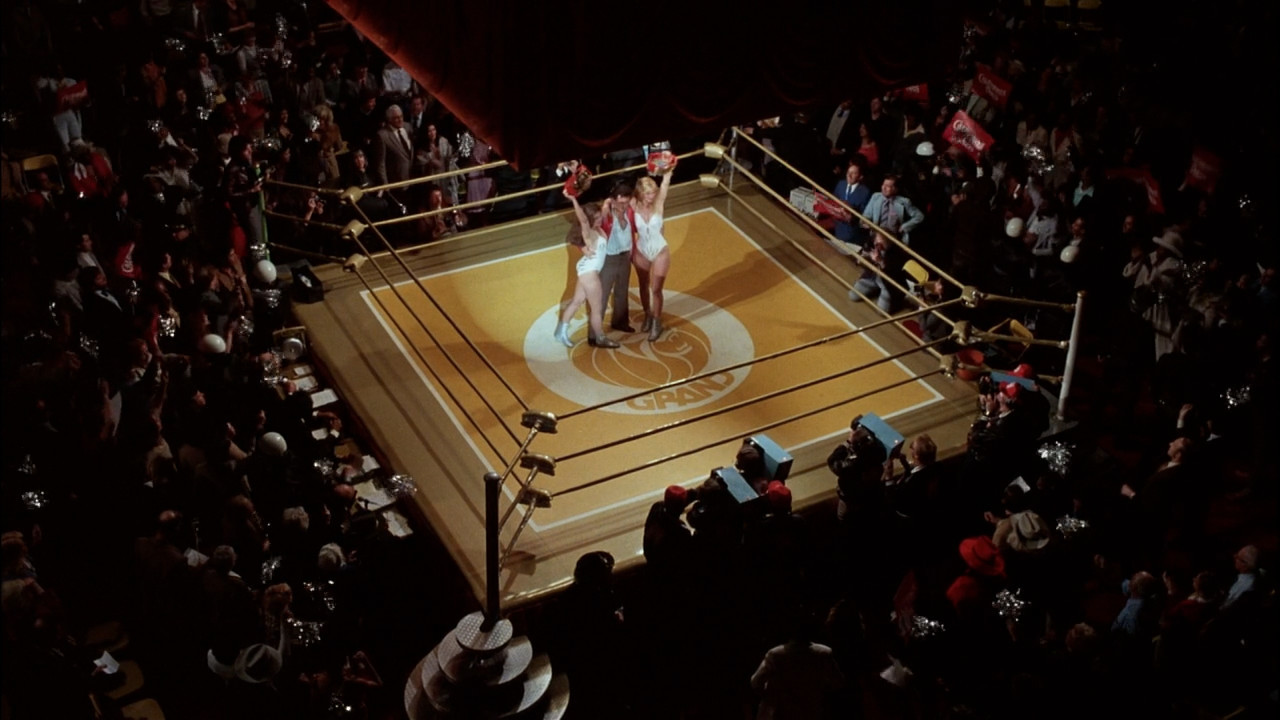…All the Marbles
01/08/2025
- Alex Page
01/08/2025
- Alex Page
The supposed “magic of entertainment” exists as an effective excuse for the disguising of spectacle—when the audiences in Robert Aldrich's …All the Marbles enter the arena, they rush underneath a sign of veneration for the sponsor kind enough to provide images to placate them, innocently dazzled by the flashing lights that absolve the organisers. As such, it would not be surprising to see this series of shots opening the film, easing the viewer into the excitement of the wrestling match:


But Aldrich never lets his audience forget that what they are seeing is a product, and interrupts this sequence with two additional shots. The first shows the car that an anonymous audience member presumably arrived in, with the same Goodyear tires that have funded the House that Rubber Built. The second shows the actual name of the theater, hidden in the shadows, away from the view of the crowds. Its true identity has been engulfed by its subordination to commerce.


The wrestlers are willing to bend the rules where they can get away with it, but remain largely obedient. They may portray violent deconstruction of the sport as they pull the referee into the ring, but we soon realise this is standard and is itself monitored. Meanwhile, Aldrich finds a desire for brutality in the audiences that scream “WE WANT BLOOD!”, desperate to see the destruction of the idealised female body. The ultimate goal for the California Dolls is, then, to distinguish themselves as wrestlers, inciting the transformation of a chant for violence into a chant of admiration by placing themselves above violence. To this end, they create personas defined by their whiteness—a pair of “dolls” who triumph over a pair of Japanese women, then a pair of Black women, and their lowest moment comes when they are required to fight in a mud pit that darkens their skin, pushing them back into a sordid entertainment.

Their manager, Harry, is an amalgamation of the American ideals built upon the Will Rogers and Clifford Odets quotes that his father learnt the English language from and which he inherited, approaching American culture through the articles of the New York Times and playing crooked games with his own crooked dice. While the Dolls use the image of their whiteness to place themselves above violence, Harry uses the humorous pretense of a regular stress test on a car he was considering buying as a justification for attacking the car of a backstabbing promoter. They then drive away, always propelled towards a new venue, always searching for their next match.
They drive by factories, thankful that at least they don’t work there, towards the big match held in the MGM Grand Hotel, the same MGM that produced …All the Marbles, where the MGM lion is available for photographs—Aldrich again refuses to capitulate to the hypnosis of this “magic”. The dolls emerge into the ring in glittering costumes, hearing “WE WANT THE CALIFORNIA DOLLS” from a set of children paid to perform desire, before they are required to dispose of their costumes and wash off their painted face for the match. They suffer at the hands of their opponents, they make their opponents suffer, and eventually they prevail. It may thrill us and make us fear for their safety, but once the show has ended, we find that all they have gained is money, that they are still caught in the same spectacle as before, that nothing has been transcended. And it is in this flatness, this pointlessness, that …All the Marbles ends. It is an accursed cycle—the Dolls win a little money in a fight, Harry spends most of it before they drive to the next fight—and as Aldrich does not show what happens after the Dolls leave the ring, there is no reason to believe that it will not simply continue ad nauseam. So it does.
